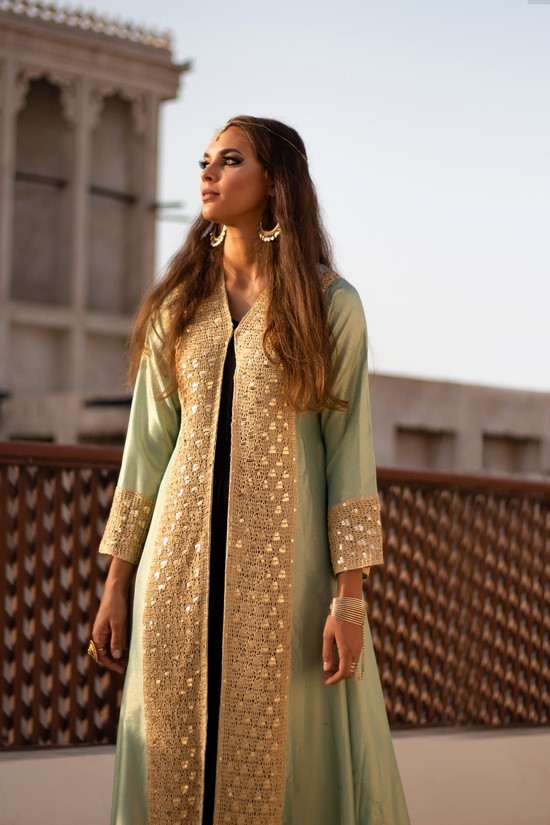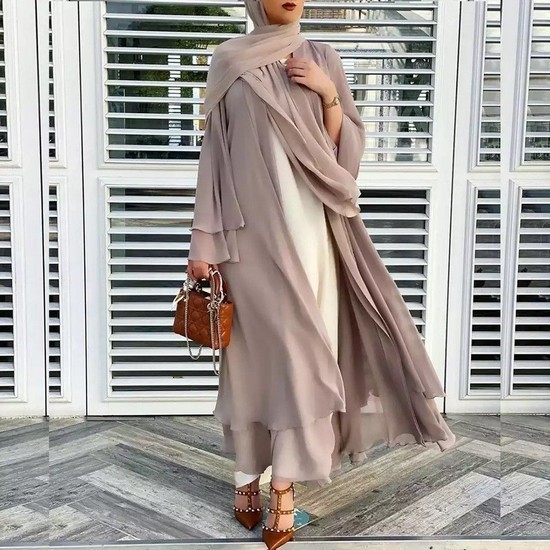Fashion is often dictated by
occasions, and in the
Muslim world, Ramadan is one such time. It is also a time
when rituals are observed, specific events are held and people want to appear
in their fineries after a long day of fasting.
اضافة اعلان
The clothes Muslims wear to an iftar may be
different from those they wear for lunch or dinner invitations.
Women, particularly, see Ramadan as an opportunity
to express themselves and their unique styles, while still giving due
consideration to their faith.
Many would think that abaya is the most appropriate
for women during Ramadan, but this is not the case.
Women, particularly, see Ramadan as an opportunity to express themselves and their unique styles, while still giving due consideration to their faith.
Following are some pieces
Muslim women might choose
to wear during the holy month to reflect their unique style:
Kaftans: Are long, loose-fitting, and flowy dresses. They look like tunics, but they
have wider sleeves and are made of light fabrics to keep people cool. Kaftans
come in a variety of colors, shades, and patterns, making it easy to find one
that complements one’s desired style.

Women may choose to wear open kaftans, which go well
with dresses and skirts. They might also add a belt if the kaftans are loose
fitting or want something with more definition. One might design the belt if
the kaftan did not come with it, and this will help better define the waist.
Colorful and bright kaftans give a lively vibe to one’s look. Satin kaftans
are popular and ideal for a stylish, formal evening outfit. By way of
accessories, experimenting with designs and statement pieces on heels, bags,
and even jewelry could be enjoyable and give free rein to imagination.
 Kimonos:
Kimonos: Could be
one of the most worn and popular pieces during
Ramadan. The many styles of
kimonos out there could complete the Ramadan look; there are also various ways
to style them. For example, one may choose a casual look for iftar, and a more
elegant look for suhoor.
One could pair a modest dress with a colorful
kimono to obtain a chic look, or wear it with skinny pants and a basic
T-shirt
to make the look more elegant. One could
also choose to wear a matching kimono set, which is popular in the fashion
industry. Trying the matching kimono set once would make one want to buy it in
every color because it is easy to style and accessorize. It can be worn for
iftar, suhoor, or any other occasion in Ramadan.
 Maxi
dresses:
Maxi
dresses: When attending family events during Ramadan, and they may be
many, one may want to look one’s best. A long-sleeved maxi dress is a perfect
fit for these events as they are modest. Maxi dresses are comfortable, stylish,
light, and give a feeling of freshness, and appropriately show one’s figure. It is
easy to choose a dress that suits one’s body type and unique style because they
come in many different prints and cuts.
Some may consider wearing the national costume old fashion, but national dresses often evolved to keep up with fashion trends.
National
costumes: Instead of wearing clothes with Western influence, one may
choose to wear the national costume, to reflect one’s culture and heritage
irrespective of where one lives. Sticking to traditions is a good way for young
Muslims from immigrant families to identify with their origin.
Some may consider wearing the national costume old
fashion, but national dresses often evolved to keep up with fashion trends.
MENA region costumes are all beautiful, loose and comfortable, and often
elegant, which makes them suitable to wear at any time.
Read more Fashion
Jordan News



